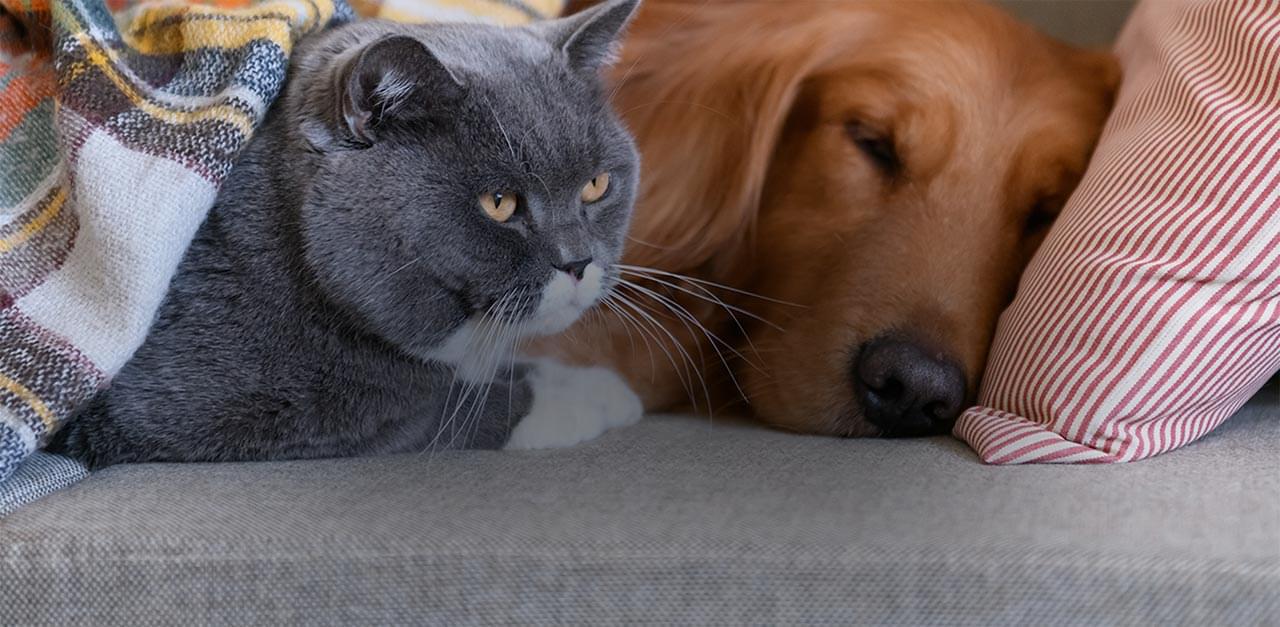Caring for Your Cat With Diabetes
Diabetes can be managed successfully with proper treatment, and diet. Although it may not be completely cured, your cat can live a happy, normal life.
The goal in managing diabetes is to regulate blood glucose concentrations, avoiding spikes and drops, to restore and maintain your cat’s quality of life.
Starting Insulin Therapy
After diagnosis, your vet will calculate the right starting dose of insulin for your cat. Your vet may also recommend a change in your cat’s diet as this can be an important part of successful management of diabetes in cats.
Your vet and vet nurse are your best advocates. They will teach you everything you need to know about giving Caninsulin® via syringe or VetPen®. They may also discuss monitoring your cat’s blood or urine glucose levels at home.
Closely monitoring your cat’s clinical signs at home (e.g. water and food intake, activity and urination frequency), will be really important to successful management of their diabetes. Your vet will use this information and things like their body weight and blood and urine glucose levels to establish the correct dose of insulin at the start and throughout their diabetes journey. Your vet may adjust their starting dose a few times over the initial weeks or months until they are settled on insulin treatment and they may adjust the dose at check ups moving forward depending on how they are doing to ensure your cat is getting the best help and support.
Some cats with diabetes no longer need insulin after a few weeks or months of treatment, a condition known as clinical remission. This does not mean your cat’s diabetes has been cured, only that it’s stable. Ongoing care must still be taken with your cat’s diet and lifestyle and insulin treatment may be required at a later date, so it’s important to continue regular check-ups.

Monitoring Glucose Levels
An important part of managing overall diabetes therapy for your cat is to monitor their glucose levels. This can be done in two ways:
- Blood Test
Measuring the glucose level in your cat’s blood is the most accurate method. It can be done either at the veterinary practice or at home with a portable glucometer with blood test strips or using a monitoring device attached to their skin. Learn More About Monitoring Blood Glucose
- Urine Test
This test checks your cat’s urine for the presence of glucose and ketones (a chemical produced when the body burns fat for energy). It is not as accurate as measuring glucose in the blood, but can be done at home easily. Learn More About Monitoring Glucose & Ketones
If your pet has significant weight gain or loss, or recurrence of signs that were previously controlled, talk to your vet or vet nurse. This may affect treatment or may be a sign of a complication of diabetes.
Controlling Diet
Diet plays a vital role in helping to keep your cat’s diabetes regulated. Your vet can recommend choices specifically for your cat, but these basic tips can help:
- Choose cat foods with quality sources of protein, and low carbohydrates.
- Keep meal content and volume consistent every day and if your cat eats distinct meals, keep these at the same time each day.
Overall, a tasty and nutritious diet can minimise fluctuations in blood glucose, help your cat maintain a healthy weight, and manage diabetes . Learn More About Nutrition for Cats with Diabetes
Spaying Your Female Cat
If you have a female cat, your vet will recommend that you have your cat spayed as part of the treatment. That’s because one of the female sex hormones, progesterone, can interfere with the normal action of insulin. In order to remove the source of progesterone, spaying your diabetic female cat is critical.
Regular Veterinary Checkups
Keep up with regular visits to your vet to help identify any changes in your cat’s condition. This is the best way to keep your cat’s diabetes stabilised. It can also prevent possible complications and side effects from occurring. Typically your vet will recommend visiting 2–4 times a year for a physical examination and possibly laboratory testing once your cat is stabilised.
Even after a long period of stability, changes to insulin requirements may need to be updated. Many of these updates are due to changes such as:
- Weight loss or gain
- Dental problems
- Presence of other diseases or infections
- Progesterone in unspayed females
- Additional medications
If your cat is going through any of these changes, they may again show signs of diabetes (drinking, urinating more, etc.). If you’re aware of changes, or notice signs reappear, consult your vet straight away.
Living with a Cat With Diabetes
Attentive care and regular doses of Caninsulin® can help your cat lead a happy and healthy life.
The good news is that the life expectancy of cats that stay regulated with insulin is similar to cats without diabetes. Good communication between you and your veterinary practice, and adhering to the management regimen, will help keep your cat healthy.
Find more information and FAQs about managing diabetes. Read Now
Tracking Results

Tracking Tools & Resources
1. Pet Diabetes Tracker app
Review and keep important information to manage diabetes.


2. Blood Glucose Curve Tool
Review and keep important information to manage diabetes.
3. Helpful Downloads
Additional resources to understand and manage cat diabetes.
Next Article: About Glucose Curves >
Further Reading

Talk to Your Vet Today
to learn more about pet diabetes, and how cats and dogs can lead a happy,
healthy life with proper management
Caninsulin® 40 IU/ml Suspension for Injection contains porcine insulin. POM-V.
Further information is available from the SPC, Datasheet or package leaflet.
Advice should be sought from the medicine prescriber.
Prescription decisions are for the person issuing the prescription alone.
Use Medicines Responsibly.






